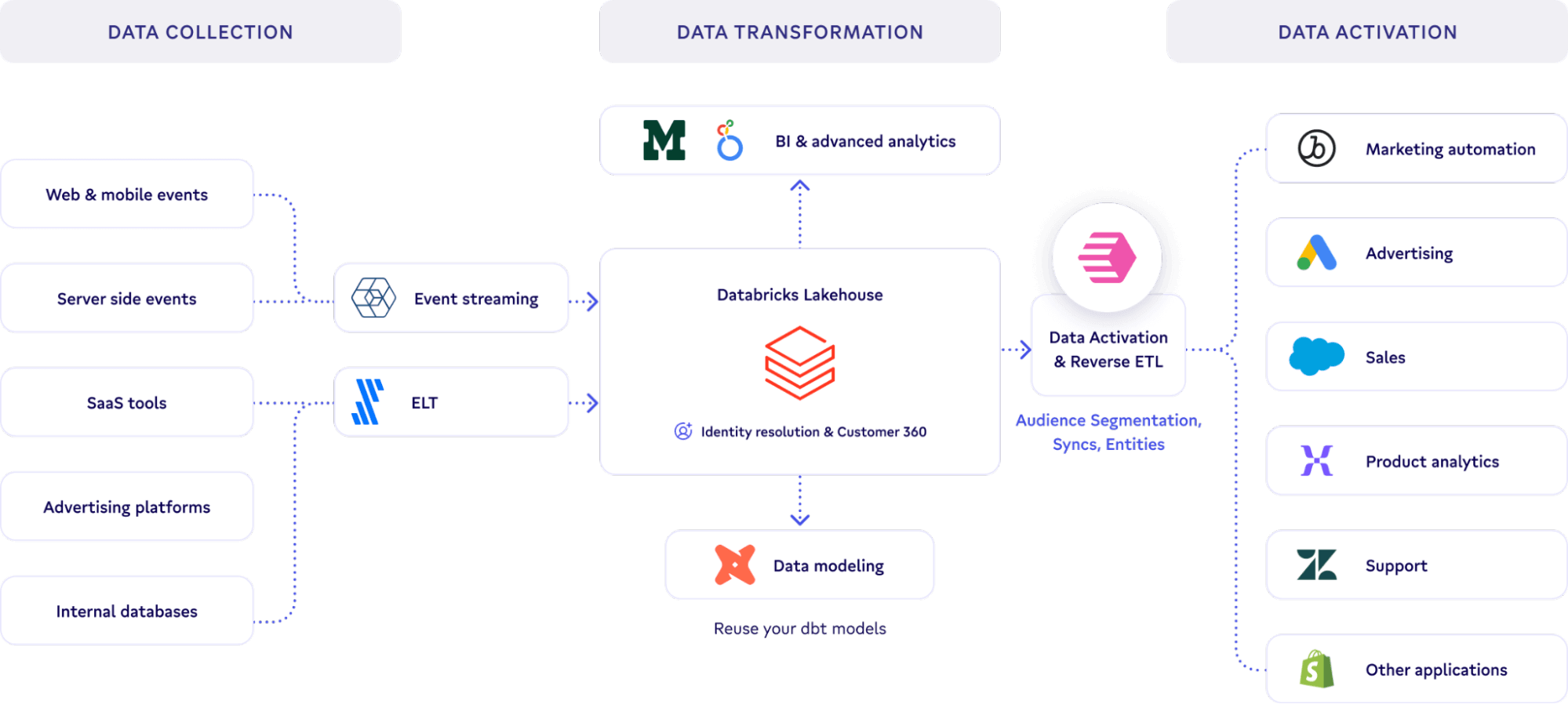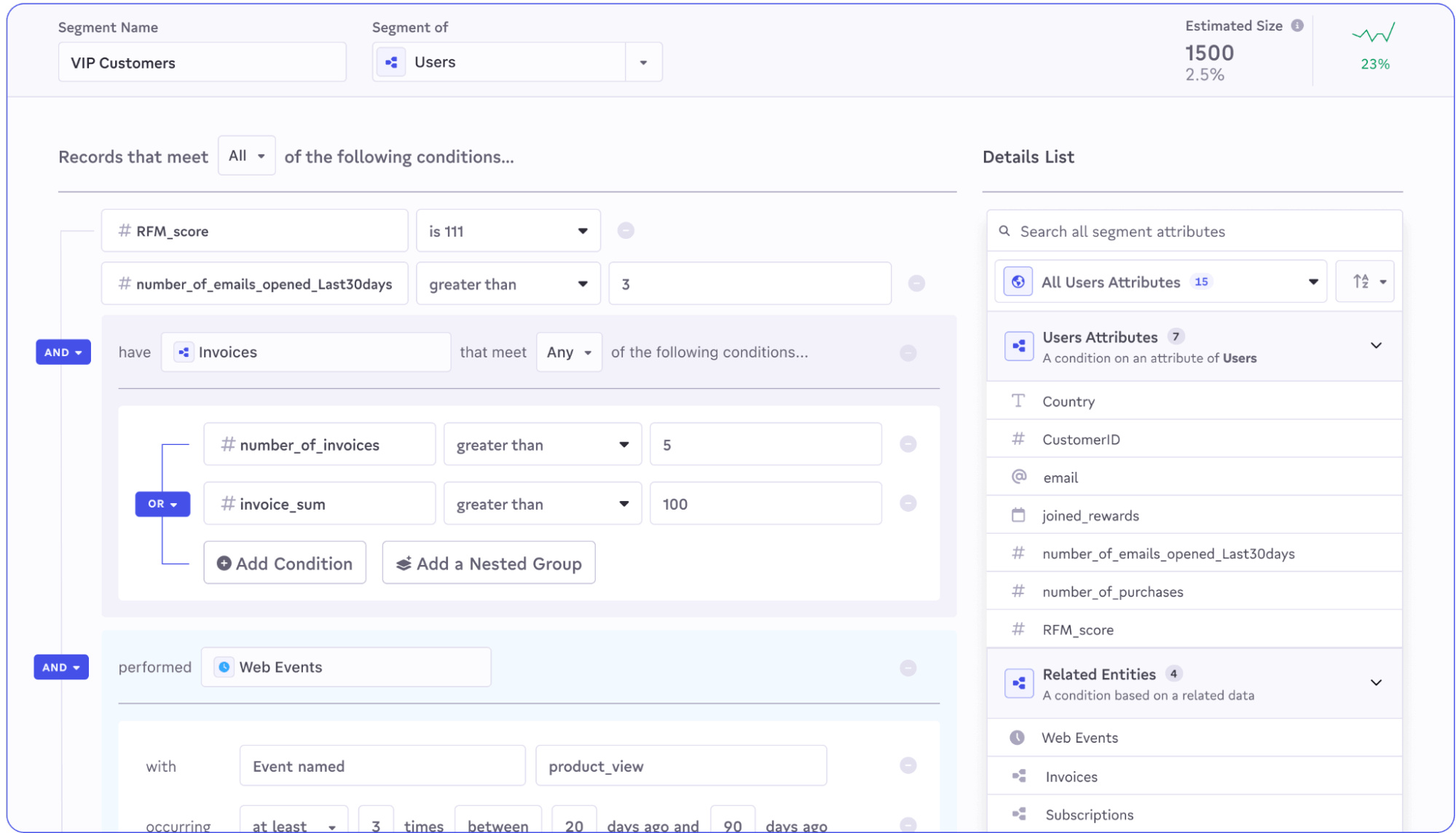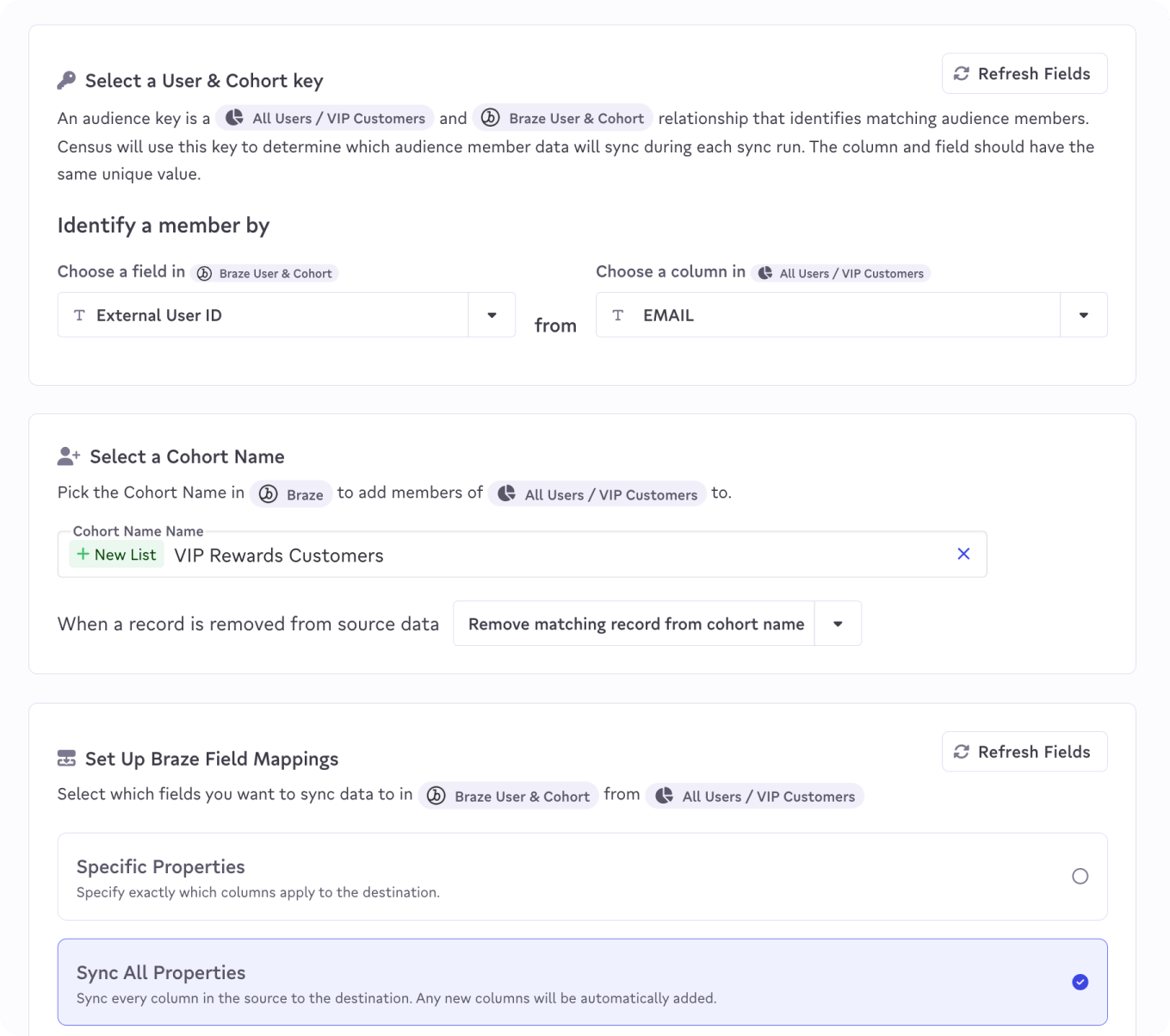
Retail Personalization with RFM Segmentation and the Composable CDP
Check out our Solution Accelerator for RFM Segmentation for more details and to download the notebooks.
For retail brands, effective customer engagement depends on the ability to accurately segment audiences and personalize messages based on first-party data. Connecting customers with the right messages makes them feel seen and heard. For the retailer, targeted content delivered to the right subset of customers is more likely to trigger the desired response when compared to the mass marketing efforts of old.
But aligning content with customers requires access to an accurate view of the customer, the ability to use customer data to identify a receptive audience and a means to connect that audience with the appropriate messages across various external channels. This is leading more and more organizations to build their own 360-degree view of their customers, connecting data from every touchpoint to develop a more comprehensive understanding of the customers’ needs and preferences.
The volume and variety of data in such a Customer 360 necessitate scalability and flexibility. The underlying platform must also be able to support advanced analytics through which deeper insights into customer behaviors can be extracted. Query performance as well as strong data protections must also be available for the data to be made usable by the various marketing teams. For all these reasons (and many more), more and more retail organizations are choosing the Databricks Lakehouse as the platform of choice for their Customer 360.
But a data platform alone doesn’t connect customers with messages. This is why Databricks partners with data activation providers such as Census to couple the underlying information assets with the functionality needed to turn customer insights into marketing action (Figure 1). Together, Databricks and Census support a best-of-breed approach to personalized, data-driven marketing, delivering what many are increasingly referring to as a Composable Customer Data Platform (CDP) architecture. For a highly differentiating capability such as personalized marketing, the Composable CDP approach gives organizations access to the fullest potential of their data while retaining the broadest reach for their marketing teams.

Census is part of Databricks Partner Connect, a one-stop portal to discover and securely connect data, analytics and AI tools directly within the Databricks platform. In just a few clicks you can configure and connect Census (and many more) directly from within your Databricks workspace.
Using RFM Segmentation to Demonstrate a Composable CDP Workflow
To illustrate the power of a Composable CDP architecture built using Databricks and Census, we have collaborated around a simple demonstration leveraging recency, frequency, and monetary (RFM) segmentation. RFM segmentation has long been a go-to technique for marketing teams seeking to differentiate between higher and lower value customers and to identify groups of customers with specific behaviors needing to be addressed to increase their value to the organization.
Using simple recency, frequency, and monetary (RFM) value metrics derived from transactional data residing in the Databricks Lakehouse, we can segment our customers into several groups using some fairly straightforward machine learning techniques. Segment assignments are persisted within the Lakehouse and revisited as new transactional data arrives.
Using these segments, the marketing team then may wish to define audiences for various messages they intend to send. For VIP Customers, i.e. those who have been recently engaged and maintain high frequency and monetary value across their interactions, the team may wish to deliver a message that acknowledges and strengthens our relationship with these customers through exclusive offers or early access to new products and services. For Loyal Customers, i.e. those with moderate frequency and moderate recency but lower spend, marketing may wish to connect them with promotional offers to up their spend or expand the categories within which they show with us. And for the Win-Back Customers, i.e. those with high frequency and higher spend but low recency, the marketing team may wish to address known concerns that may have kept them away and encourage them to engage again.
Through the Census Audience Hub, segment assignments and other customer data residing in the Databricks customer 360 are presented in a manner that allows the team to define the audiences for these various offers and messages (Figure 2). While the Data Science team has performed their work using the more traditional tools of Python, R and SQL, the marketing team accesses the results of this work using intuitive, easy-to-use user interfaces that bridge the useability gaps between these two teams.

With audiences defined, the marketing team can then use the Census UI to connect each subset of customers with specific messages and preferred delivery channels (Figure 3). With this last action, the journey from insight to action has been completed and the organization can now derive business-aligned value from their information assets.

Examining the RFM Segmentation Workflow In More Detail
To see the precise work a data science team would need to perform in order to create an RFM segmentation within Databricks, we have collaborated with Census to deliver a new solution accelerator demonstrating these steps. Please feel free to download the notebook associated with this accelerator here, import it into your Databricks environment and recreate the steps against a publicly available dataset. To connect this solution with Census, you can request a detailed product demonstration as well as a free trial.
Together, Databricks and Census can enable marketing organizations to deliver differentiating value and customer engagement leveraging the power of data and analytics.
Try Census for free




